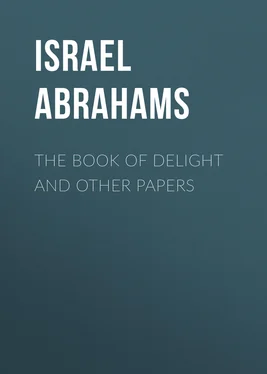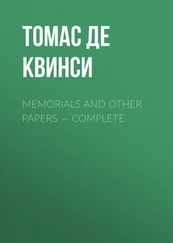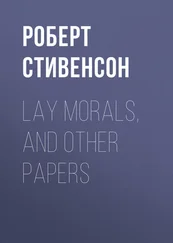Israel Abrahams - The Book of Delight and Other Papers
Здесь есть возможность читать онлайн «Israel Abrahams - The Book of Delight and Other Papers» — ознакомительный отрывок электронной книги совершенно бесплатно, а после прочтения отрывка купить полную версию. В некоторых случаях можно слушать аудио, скачать через торрент в формате fb2 и присутствует краткое содержание. Жанр: foreign_poetry, Поэзия, foreign_antique, foreign_prose, на английском языке. Описание произведения, (предисловие) а так же отзывы посетителей доступны на портале библиотеки ЛибКат.
- Название:The Book of Delight and Other Papers
- Автор:
- Жанр:
- Год:неизвестен
- ISBN:нет данных
- Рейтинг книги:5 / 5. Голосов: 1
-
Избранное:Добавить в избранное
- Отзывы:
-
Ваша оценка:
- 100
- 1
- 2
- 3
- 4
- 5
The Book of Delight and Other Papers: краткое содержание, описание и аннотация
Предлагаем к чтению аннотацию, описание, краткое содержание или предисловие (зависит от того, что написал сам автор книги «The Book of Delight and Other Papers»). Если вы не нашли необходимую информацию о книге — напишите в комментариях, мы постараемся отыскать её.
The Book of Delight and Other Papers — читать онлайн ознакомительный отрывок
Ниже представлен текст книги, разбитый по страницам. Система сохранения места последней прочитанной страницы, позволяет с удобством читать онлайн бесплатно книгу «The Book of Delight and Other Papers», без необходимости каждый раз заново искать на чём Вы остановились. Поставьте закладку, и сможете в любой момент перейти на страницу, на которой закончили чтение.
Интервал:
Закладка:
Hebron, from yet another point of view, recalls its old-world associations. Not only is Hebron one of the oldest cities in the world still inhabited, but it has been far less changed by Western influences than other famous places. Hebron is almost entirely unaffected by Christian influence. In the East, Christian influence more or less means European influence, but Hebron is still completely Oriental. It is a pity that modern travellers no longer follow the ancient route which passed from Egypt along the coast to Gaza, and then struck eastwards to Hebron. By this route, the traveller would come upon Judea in its least modernized aspect. He would find in Hebron a city without a hotel, and unblessed by an office of the Monarch of the East, Mr. Cook. There are no modern schools in Hebron; the only institution of the kind, the Mildmay Mission School, had scarcely any pupils at the time of my visit. This is but another indication of the slight effect that European forces are producing; the most useful, so far, has been the medical mission of the United Free Church of Scotland. But Hebron has been little receptive of the educational and sanitary boons that are the chief good—and it is a great good—derived from the European missions in the East. I am almost reluctant to tell the truth, as I must, of Hebron, and point out the pitiful plight of our brethren there, lest, perchance, some philanthropists set about mending the evil, to the loss of the primitiveness in which Hebron at present revels. This is the pity of it. When you employ a modern broom to sweep away the dirt of an ancient city, your are apt to remove something else as well as the dirt.
Besides its low situation and its primitiveness, Hebron has a third peculiarity. Go where one may in Judea, the ancient places, even when still inhabited, wear a ruined look. Zion itself is scarcely an exception. Despite its fifty thousand inhabitants, Jerusalem has a decayed appearance, for the newest buildings often look like ruins. The cause of this is that many structures are planned on a bigger scale than can be executed, and thus are left permanently unfinished, or like the windmill of Sir Moses are disused from their very birth. Hebron, in this respect again, is unlike the other cities of Judea. It had few big buildings, hence it has few big ruins. There are some houses of two stories in which the upper part has never been completed, but the houses are mostly of one story, with partially flat and partially domed roofs. The domes are the result both of necessity and design; of necessity, because of the scarcity of large beams for rafters; of design, because the dome enables the rain to collect in a groove, or channel, whence it sinks into a reservoir.
Hebron, then, produces a favorable impression on the whole. It is green and living, its hills are clad with vines, with plantations of olives, pomegranates, figs, quinces, and apricots. Nowhere in Judea, except in the Jordan valley, is there such an abundance of water. In the neighborhood of Hebron, there are twenty-five springs, ten large perennial wells, and several splendid pools. Still, as when the huge cluster was borne on two men's shoulders from Eshkol, the best vines of Palestine grow in and around Hebron. The only large structure in the city, the mosque which surmounts the Cave of Machpelah, is in excellent repair, especially since 1894-5, when the Jewish lads from the Alliance school of Jerusalem renewed the iron gates within, and supplied fresh rails to the so-called sarcophagi of the Patriarchs. The ancient masonry built round the cave by King Herod, the stones of which exactly resemble the masonry of the Wailing Place in Jerusalem, still stands in its massive strength.
I have said that Hebron ought to be approached from the South or West. The modern traveller, however, reaches it from the North. You leave Jerusalem by the Jaffa gate, called by the Mohammedans Bab el-Khalil, i.e. Hebron gate. The Mohammedans call Hebron el-Khalil, City of the Friend of God, a title applied to Abraham both in Jewish and Mohammedan tradition. Some, indeed, derive the name Hebron from Chaber, comrade or friend; but Hebron may mean "confederation of cities," just as its other name, Kiriath-arba, may possibly mean Tetrapolis. The distance from Jerusalem to Hebron depends upon the views of the traveller. You can easily get to Hebron in four hours and a half by the new carriage road, but the distance, though less than twenty miles, took me fourteen hours, from five in the morning till seven at night. Most travellers turn aside to the left to see the Pools of Solomon, and the grave of Rachel lies on the right of the highroad itself. It is a modern building with a dome, and the most affecting thing is the rough-hewn block of stone worn smooth by the lips of weeping women. On the opposite side of the road is Tekoah, the birthplace of Amos; before you reach it, five miles more to the north, you get a fine glimpse also of Bethlehem, the White City, cleanest of Judean settlements. Travellers tell you that the rest of the road is uninteresting. I did not find it so. For the motive of my journey was just to see those "uninteresting" sites, Beth-zur, where Judas Maccabeus won such a victory that he was able to rededicate the Temple, and Beth-zacharias, through whose broad valley-roads the Syrian elephants wound their heavy way, to drive Judas back on his precarious base at the capital.
It is somewhat curious that this indifference to the Maccabean sites is not restricted to Christian tourists. For, though several Jewish travellers passed from Jerusalem to Hebron in the Middle Ages, none of them mentions the Maccabean sites, none of them spares a tear or a cheer for Judas Maccabeus. They were probably absorbed in the memory of the Patriarchs and of King David, the other and older names identified with this district. Medieval fancy, besides, was too busy with peopling Hebron with myths to waste itself on sober facts. Hebron, according to a very old notion, was the place where Adam and Eve lived after their expulsion from Eden; it was from Hebron's red earth that the first man was made. The Pirke di Rabbi Eliezer relate, that when the three angels visited Abraham, and he went to get a lamb for their meal, the animal fled into a cave. Abraham followed it, and saw Adam and Eve lying asleep, with lamps burning by their tombs, and a sweet savor, as of incense, emanating from the dead father and mother of human-kind. Abraham conceived a love for the Cave, and hence desired it for Sarah's resting-place.
I suppose that some will hold, that we are not on surer historical ground when we come to the Biblical statement that connects Abraham with Hebron. Before arguing whether Abraham lived in Hebron, and was buried in Machpelah, one ought to prove that Abraham ever lived at all, to be buried anywhere. But I shall venture to take Abraham's real existence for granted, as I am not one of those who think that a statement must be false because it is made in the Book of Genesis. That there was a very ancient shrine in Hebron, that the great Tree of Mamre was the abode of a local deity, may be conceded, but to my mind there is no more real figure in history than Abraham. Especially when one compares the modern legends with the Biblical story does the substantial truth of the narrative in Genesis manifest itself. The narrative may contain elements of folk poetry, but the hero Abraham is a genuine personality.
As I have mentioned the tree, it may be as well to add at once that Abraham's Oak is still shown at Hebron, and one can well imagine how it was thought that this magnificent terebinth dated from Bible times. A few years ago it was a fresh, vigorous giant, but now it is quite decayed. The ruin began in 1853, when a large branch was broken off by the weight of the snow. Twelve years ago the Russian Archimandrite of Jerusalem purchased the land on which the tree stands, and naturally he took much care of the relic. In fact, he took too much care, for some people think that the low wall which the Russians erected as a safeguard round the Oak, has been the cause of the rapid decay that has since set in. Year by year the branches have dropped off, the snow and the lightning have had their victims. It is said that only two or three years ago one branch towards the East was still living, but when I saw it, the trunk was bare and bark-less, full of little worm-holes, and quite without a spark of vitality. The last remaining fragment has since fallen, and now the site of the tree is only marked by the row of young cypresses which have been planted in a circle round the base of the Oak of Mamre. But who shall prophesy that, a century hence, a tree will not have acquired sufficient size and antiquity to be foisted upon uncritical pilgrims as the veritable tree under which Father Abraham dwelt!
Читать дальшеИнтервал:
Закладка:
Похожие книги на «The Book of Delight and Other Papers»
Представляем Вашему вниманию похожие книги на «The Book of Delight and Other Papers» списком для выбора. Мы отобрали схожую по названию и смыслу литературу в надежде предоставить читателям больше вариантов отыскать новые, интересные, ещё непрочитанные произведения.
Обсуждение, отзывы о книге «The Book of Delight and Other Papers» и просто собственные мнения читателей. Оставьте ваши комментарии, напишите, что Вы думаете о произведении, его смысле или главных героях. Укажите что конкретно понравилось, а что нет, и почему Вы так считаете.











